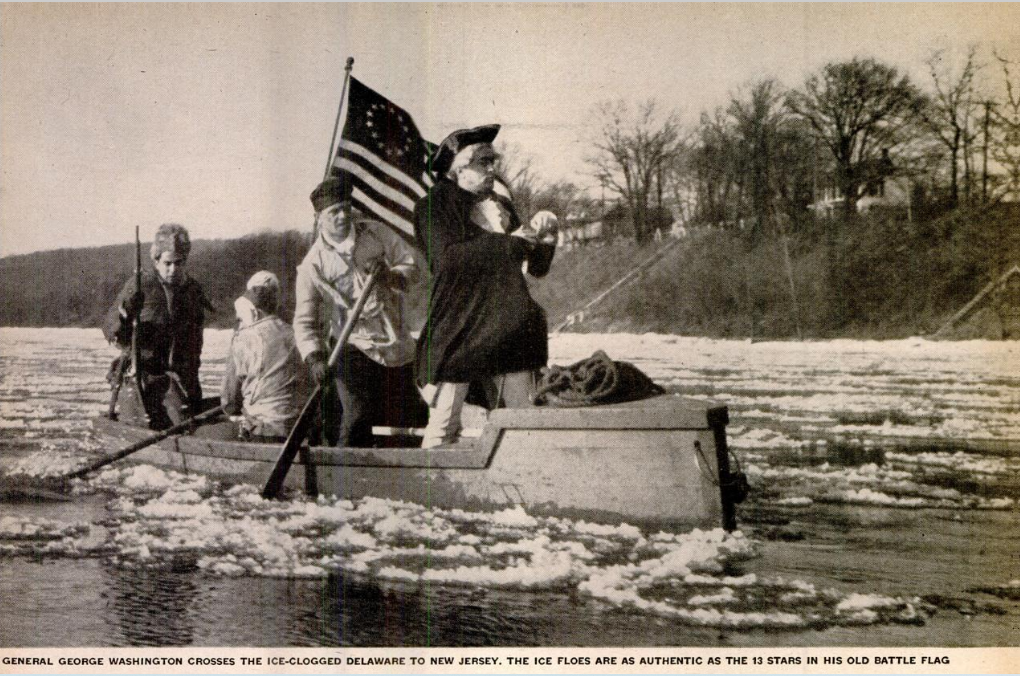
Recreations of the crossing of the Delaware River occurred as early as 1931. But one of the earliest public crossing reenactments was organized by a college fraternity.
Two Rider College students, Frank Ewart and Donald Reynolds, proposed a crossing reenactment in January 1947 as a way for Phi Sigma Nu pledges to promote a non-hazing initiation. As the event was meant to be comical, their original plans called for a hay wagon to be pulled across the Washington Crossing Bridge. But when a student named Arnie Ropeik arranged for Life magazine to cover the event, the fraternity decided to try crossing by boat.
Trenton’s radio station promoted the January 23, 1947 event and donations, including horses, food and boats, began to arrive. Despite these donations, the fraternity spent $1,000 on clothing and other materials. Rider College sanctioned the event, and dozens of students—including World War II veterans—were given the day off and bussed in to watch the reenactment.
After a practice run, 40 Rider students in four rowboats crossed the river in about 15 minutes. Their journey was made more challenging by icy conditions on the river, and three of the boats were pulled further downstream by a stronger than anticipated current. Once ashore, they had refreshments at a USO-style canteen.
Washington, portrayed by George Chafey, was offered a horse to ride but chose to ride a bicycle instead.
Though today’s reenactments are confined to the Delaware River, the Rider students didn’t stop when they reached New Jersey. After enjoying refreshments, they made their way to Trenton in vehicles and fought students portraying Hessians with vegetables and feather pillows. After the fight, even George Washington himself aided in the cleanup by helping to sweep up the feathers.
On February 17, 1947, an article on this reenactment appeared in Life and brought considerable attention to the park. Although the article described the reenactment as a college prank, it may have sparked the idea of future public reenactments organized by park officials. The Life article and photos are available online.

